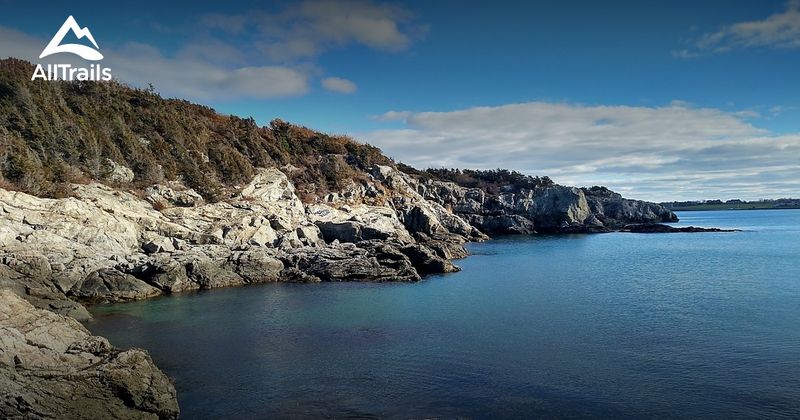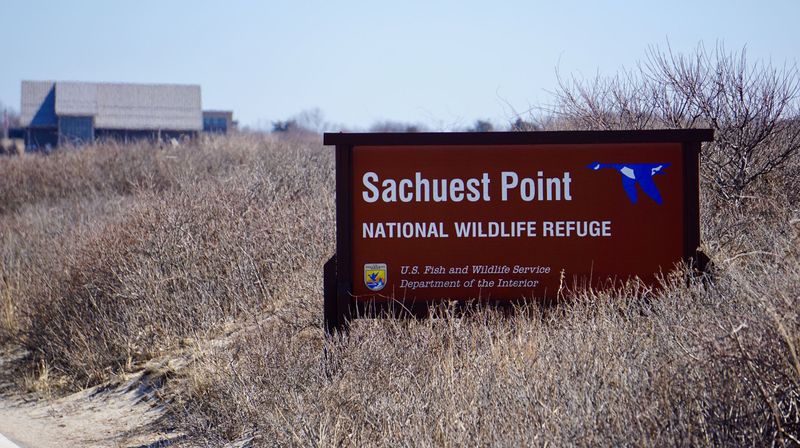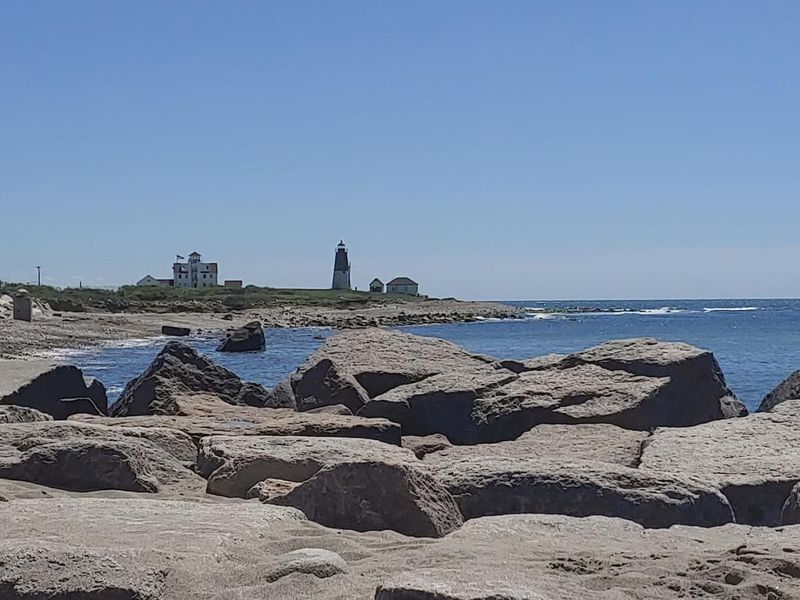Rhode Island’s rugged shoreline draws travelers with dramatic ledges and secret coves, but some visitors chase risky thrills that local officials continuously warn against. Illegal cliff diving might look tempting on social media clips, yet the hazards behind those clips rarely make the feed. This guide unpacks real-world risks at well-known spots and offers safer, legal ways to enjoy the Ocean State’s coast. Read on before you leap into something you cannot undo.
1. Beavertail State Park, Jamestown

Beavertail’s rocky headlands are spectacular for lighthouse views and tidepooling, but cliff jumping here is illegal and dangerous. The ledges are undermined by fractures and slick algae, and swells can surge without warning. First responders in Jamestown note that rescues often involve cold shock, spinal injuries, and difficult extractions across jagged terrain.
Park signage and Rhode Island Department of Environmental Management advisories stress staying off unstable edges and entering water only at designated spots. Visitors seeking water access can choose supervised beaches like nearby Mackerel Cove with lifeguards in season. Photographers will find sunrise and sunset angles near the lighthouse safe from drop-offs.
When exploring, wear sturdy footwear and keep distance from wet, dark rock bands that indicate wave wash. Respect closures, as they protect both the ecosystem and you. A calm day can turn quickly with offshore wind shifts that channel waves into narrow cuts.
2. Fort Wetherill State Park, Jamestown

Fort Wetherill’s granite bluffs and graffiti-splashed batteries attract explorers, divers, and casual hikers, yet cliff jumping is prohibited and risky. The cove depths vary with steep drop-offs, and submerged rock shelves sit close to the surface in places that appear deep.
Local scuba groups report shifting visibility, strong currents after storms, and heavy boat traffic during peak season. The Rhode Island DEM and Jamestown Police regularly issue reminders about trespassing on unstable structures and unsafe entries. If you want to get in the water, consider guided shore dives with certified operators who monitor conditions. Wear a personal flotation device when paddling the cove and keep a dive flag visible if snorkeling under local regulations.
Trails above the batteries deliver views without flirting with edges. Respect the park’s restoration efforts and avoid scrambling down cliffs, where a small slip can mean a complicated rescue and significant fines.
3. The Black Point Trail, Narragansett

Black Point offers a scenic shoreline walk between Scarborough and Narragansett with basaltic ledges, tidepools, and sea stacks. Despite viral clips, jumping from these rocks is illegal and treacherous due to unpredictable swell refraction and slippery surfaces.
Emergency calls here often relate to falls, not just entries, since wet lichen makes footing uncertain. Rhode Island officials advise staying on established paths and treating all ledges near the surf line as hazardous. Tidal changes can mask shallow shelves and create forceful backwash that pins swimmers. Choose lifeguarded beaches in Narragansett for swimming and keep cliff viewpoints for photography. Bring grippy shoes and check tide charts to avoid being cut off by rising water.
If exploring tidepools, step lightly to protect marine life and watch the horizon for sets. Black Point’s beauty rewards patience, not stunts, and respecting closures preserves access for everyone.
4. Sachuest Point Area, Middletown

Nearby to Sachuest Point National Wildlife Refuge, some visitors try unsanctioned jumps from offshore rock shelves and jetty-like formations beyond refuge boundaries. The refuge itself bans entering sensitive areas, and currents near Second Beach can be deceptively strong.
Wildlife staff and Middletown responders emphasize staying on marked trails and out of restricted zones protecting nesting birds. Rock profiles shift after storms, leaving sharp edges beneath shallow water. Instead, enjoy the refuge’s loop trails for birding and coastal views, and swim only where lifeguards post daily conditions. Cold shock remains a year-round risk in Rhode Island, even when air temperatures feel warm.
Prepare for fog that reduces visibility for paddlers and nearshore swimmers. Use reef-safe sunscreen and pack out all trash to keep habitats healthy. Keep adventures legal and low impact; the coastline will be just as memorable without jumping.
5. Cliff Walk, Newport

Newport’s Cliff Walk pairs Gilded Age mansions with rugged shores, but climbing or leaping from the rocks is prohibited and unsafe. Sections have narrow footing and active slide zones, and rogue waves can sweep over ledges even on quiet days.
The City of Newport posts rules along the path, and repairs continue after storm damage that destabilized certain segments. Rescue access is limited along some stretches, increasing response times when mishaps occur. Visitors should remain on the designated trail and use formal access points to reach approved shoreline areas. For a refreshing break, plan a visit to nearby public beaches with seasonal lifeguards.
Check municipal updates for closures and detours before heading out. Footwear with traction and situational awareness go a long way here. Snap photos from stable overlooks and let the water be a backdrop, not a landing zone.
6. Easton’s Beach and Nearby Rocks, Newport

Easton’s Beach offers lifeguarded swimming in season, yet nearby rock outcrops tempt some visitors to leap where it is not allowed. The juxtaposition of shallow patches and hidden boulders poses severe impact risks. Newport officials encourage beach patrons to stay within flagged areas and avoid climbing on jetty rocks, which become slick with spray.
After heavy weather, debris and shifted stones can create ankle traps and sharp edges underwater. Families will find safer fun with tide-friendly activities on the sand or a walk to the rotary playground. Keep valuables dry in waterproof pouches and follow lifeguard directions without hesitation. If you plan water sports, check local advisories for surf and rip intensity.
Respecting boundaries ensures emergency resources stay available for true accidents rather than preventable incidents. Rhode Island beaches remain welcoming when visitors honor posted guidelines.
7. Point Judith and Camp Cronin, Narragansett

Point Judith Light and Camp Cronin Fishing Area see frequent swell energy that rebounds off breakwaters, making water movement complex. Unauthorized jumps from breakwall sections or nearby ledges are not only illegal but can trap swimmers against riprap.
The U.S. Coast Guard and local agencies field calls here during rough conditions, which may escalate quickly with tide changes. Anglers should wear non-slip footwear and personal flotation when near edges. Visitors can enjoy safe vistas from the lighthouse grounds and designated viewing areas. Keep a wide margin from waves that splash over rocks, as sneaker sets appear without much warning.
Review marine forecasts if you plan to paddle, and never enter from armored structures. Thoughtful planning helps preserve Rhode Island’s working waterfront while reducing strain on rescue crews. Treat the area as an active maritime zone, not a playground.
8. Safer Alternatives and Local Guidance

If cliffs call to you, reframe the plan with legal, guided options in Rhode Island. Choose lifeguarded beaches and consider professional coasteering-style tours only where permitted and insured, or opt for kayak and paddleboard rentals that brief you on local hazards.
Check Rhode Island DEM, municipal beach pages, and the National Weather Service for surf, tide, and temperature updates. Pack footwear with traction, a whistle, and sun protection, and avoid entering from rocks or breakwalls. Travel with a buddy, tell someone your plan, and set a conservative cutoff for changing conditions. Respect wildlife closures and private property.
Photographers can scout sunrise points from established overlooks rather than perilous ledges. These steps keep the adventure spirit alive while putting safety first. The Ocean State rewards thoughtful choices with memorable views, thriving communities, and a trip you will want to repeat.
Dear Reader: This page may contain affiliate links which may earn a commission if you click through and make a purchase. Our independent journalism is not influenced by any advertiser or commercial initiative unless it is clearly marked as sponsored content. As travel products change, please be sure to reconfirm all details and stay up to date with current events to ensure a safe and successful trip.